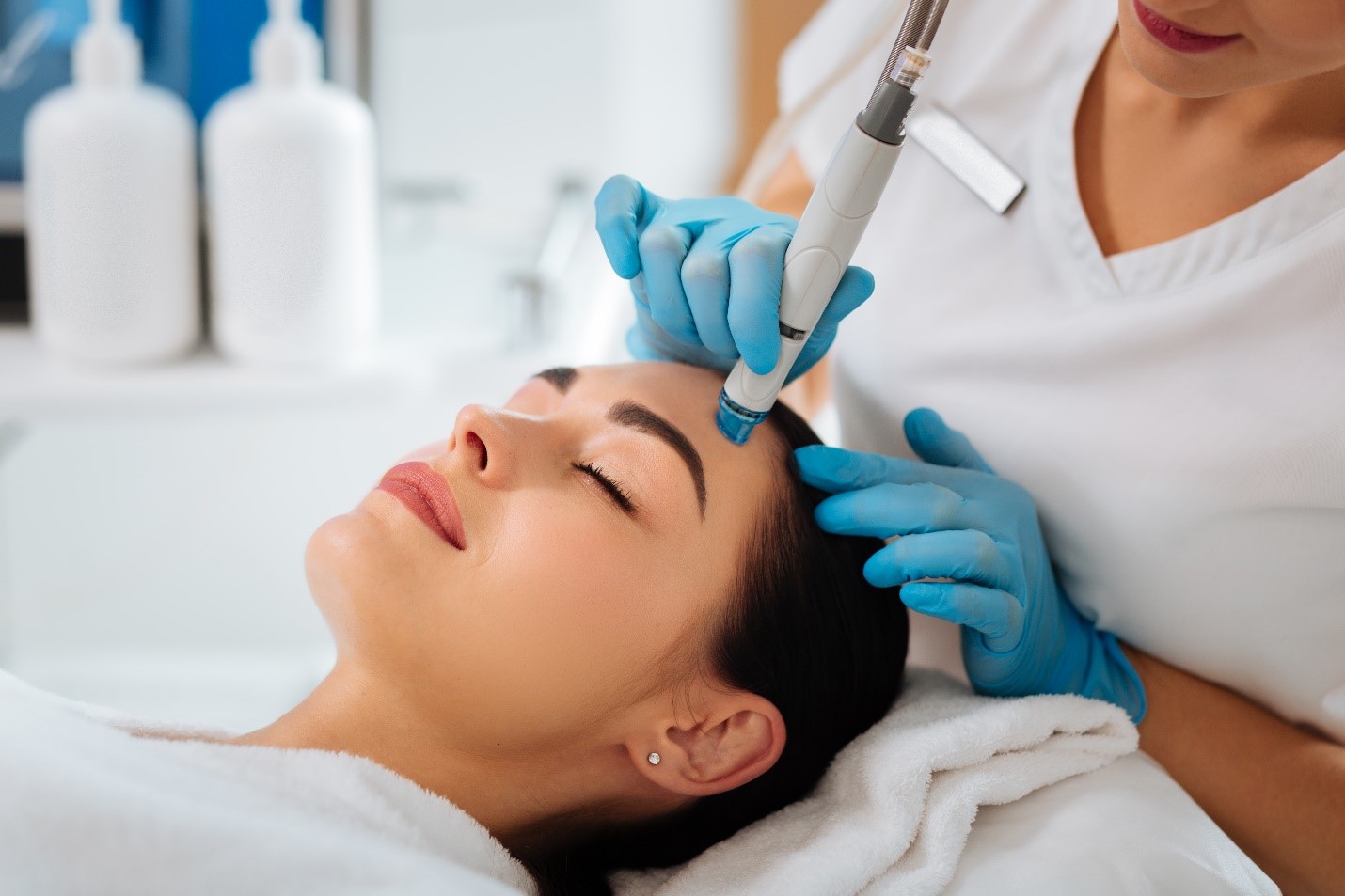A HydraFacial is a patented skin treatment available at medical spas and dermatology clinics. Often referred to as “hydradermabrasion,” it combines microdermabrasion-like exfoliation with hydrating serums.
Known for its three-step process, the HydraFacial deeply cleanses, exfoliates, and hydrates the skin. This professional treatment may address various skin issues, including acne, dryness, and wrinkles.
This non-invasive procedure is akin to a regular facial but is reputed to deliver more striking results. A mechanised wand is used to thoroughly clean and exfoliate the skin while applying serums customised to your skin type.
If you’re wondering whether a HydraFacial lives up to its reputation, continue reading to learn more about the potential benefits, possible side effects, and how it compares to similar treatments.
Benefits of a HydraFacial
The HydraFacial is said to enhance overall skin texture, tone, and appearance. This is due to the deep exfoliation that cleanses pores, removes debris, and allows better absorption of serums tailored to your skin type.
HydraFacial for Acne
Microdermabrasion techniques, including those used in HydraFacials, have long been considered effective for treating acne and acne scars. The deep exfoliation helps remove pore-clogging skin cells.
HydraFacial for Blackheads
Dead skin cells contribute to blackheads. This non-inflammatory type of acne may benefit from the exfoliating and extracting methods used in HydraFacials, though more clinical studies are needed to confirm these benefits directly.
HydraFacial for Rosacea
Finding safe cosmetic treatments for sensitive skin conditions like rosacea can be challenging. While more research is needed to prove the HydraFacial’s safety and effectiveness for rosacea, a 2006 study indicated that similar techniques might benefit papulopustular rosacea.
HydraFacial for Anti-Ageing Concerns
A small 2008 study of 20 women found that those who received HydraFacial treatments showed greater decreases in signs of skin ageing compared with those who used serums alone. Benefits included reduced pore size, less hyperpigmentation, and fewer fine lines.
HydraFacial Side Effects and Precautions
While the HydraFacial is said to be complication-free, you might feel light pressure from the wand during the procedure. Unlike other cosmetic treatments, the HydraFacial is not supposed to cause pain or redness.
Is a HydraFacial Safe During Pregnancy?
Consult your doctor before undergoing any aesthetic procedures while pregnant, including a HydraFacial. A 2017 review found that while many cosmetic treatments may be safe, there haven’t been enough clinical studies to confirm this.
Can a HydraFacial Cause Breakouts?
The HydraFacial is designed to address excess sebum (oil) and dead skin cells that can lead to breakouts. The treatment may also help clear impurities during skin purging that can occur after deep exfoliation.
Before your treatment, inform your provider if you have extremely sensitive skin or are allergic to any ingredients that might cause your skin to break out. Follow up with them if you experience breakouts after a HydraFacial.
How Does HydraFacial Treatment Work?
A HydraFacial is performed by a licensed aesthetician or a dermatologist and involves three steps:
- Your provider uses a vortex-like wand to clear dirt and oil from deep in your pores. They also use a peel to exfoliate and resurface your skin.
- A vacuum-like attachment on the wand extracts debris from your pores.
- A pen-like attachment applies a moisturising serum with antioxidants.
Sometimes, a HydraFacial is followed by other skincare treatments, such as dermal fillers or light therapy. These are considered add-ons and are not included as part of the HydraFacial.
HydraFacial Before and After
After a HydraFacial, you may notice smoother, more radiant skin with a more even tone. The results are often immediately visible without any signs of irritation.
HydraFacial Aftercare
Each HydraFacial session takes less than an hour and requires no downtime. Unlike harsher procedures like chemical peels, you can resume your normal activities right away.
While you shouldn’t experience redness or peeling after your session, it’s best to avoid exfoliating treatments for a couple of days post-HydraFacial.
How Often Should You Get a HydraFacial?
The frequency of HydraFacial sessions depends on your skin type and your provider’s recommendations. Some sources suggest repeating the treatment every four weeks, while others recommend every two weeks.
HydraFacial Costs
HydraFacials are more expensive than typical facials, with the average session costing around £140. Any add-ons or booster treatments will increase your cost. Prices may vary depending on your location.
If you regularly get monthly facials along with exfoliation via microdermabrasion or chemical peels, you might find that a 3-in-1 HydraFacial is slightly less expensive overall.
HydraFacial vs. Microdermabrasion
Like a HydraFacial, microdermabrasion exfoliates the skin. The key difference is that microdermabrasion uses small crystals, making it better suited for treating fine lines, wrinkles, age spots, and acne scars. Microdermabrasion also doesn’t involve serums.
Dermalinfusion vs. HydraFacial
Dermalinfusion uses similar technology and offers similar benefits to a HydraFacial. Both are 3-in-1 procedures that cleanse, exfoliate, and deliver serums tailored to your skin concerns. Unlike a HydraFacial, Dermalinfusion may cause some redness and irritation afterwards.
HydraFacial vs. Radiofrequency Therapy
Radiofrequency (RF) therapy uses heat energy to penetrate deep skin tissues, promoting cellular turnover and collagen production. This may result in tighter, smoother skin and can help treat acne scars.
While both HydraFacial and RF therapy address signs of skin ageing, RF doesn’t involve exfoliation or serums and may cause redness post-session.
Takeaway
The HydraFacial may help address a variety of skin concerns through its 3-in-1 cleansing, exfoliating, and hydrating process. Consult a dermatologist to determine which cosmetic treatments are best suited to your specific needs.

